|
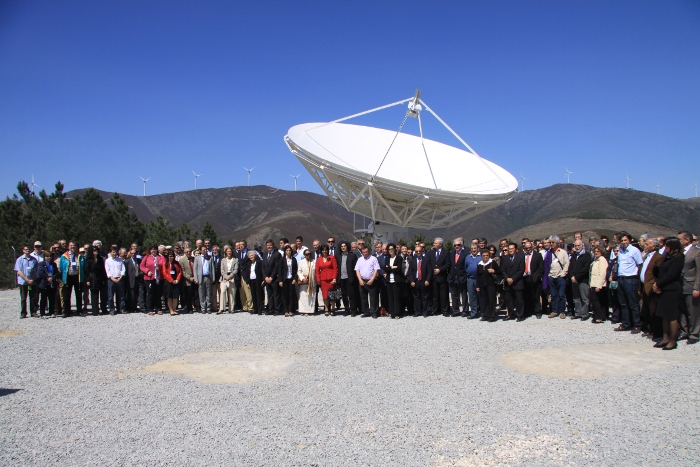
 At the beginning there was
light (photons!). The primordial Universe was hot, matter was completely
ionized and its dynamics was governed by a huge radiation bath. As the Universe
expanded and cooled, the atoms formed (380 000 years after the Big-Bang) and
this radiation bath could finally escape carrying the imprints of the forming
Large Scale Structure (the small temperature fluctuations are like a xerox copy
of the matter fluctuations at the time). Nowadays, with almost 14 thousand
million years of Cosmic History, this radiation bath forms the Cosmic Microwave
Background Radiation (CMBR), detected for the first time in 1965 and mapped
for the first time with the DMR instrument aboard
COBE satellite in 1992.
George Smoot, PI of COBE/DMR, the GEM mentor, was awarded the
Physics Nobel Prize in 2006
for this discovery.
At the beginning there was
light (photons!). The primordial Universe was hot, matter was completely
ionized and its dynamics was governed by a huge radiation bath. As the Universe
expanded and cooled, the atoms formed (380 000 years after the Big-Bang) and
this radiation bath could finally escape carrying the imprints of the forming
Large Scale Structure (the small temperature fluctuations are like a xerox copy
of the matter fluctuations at the time). Nowadays, with almost 14 thousand
million years of Cosmic History, this radiation bath forms the Cosmic Microwave
Background Radiation (CMBR), detected for the first time in 1965 and mapped
for the first time with the DMR instrument aboard
COBE satellite in 1992.
George Smoot, PI of COBE/DMR, the GEM mentor, was awarded the
Physics Nobel Prize in 2006
for this discovery.
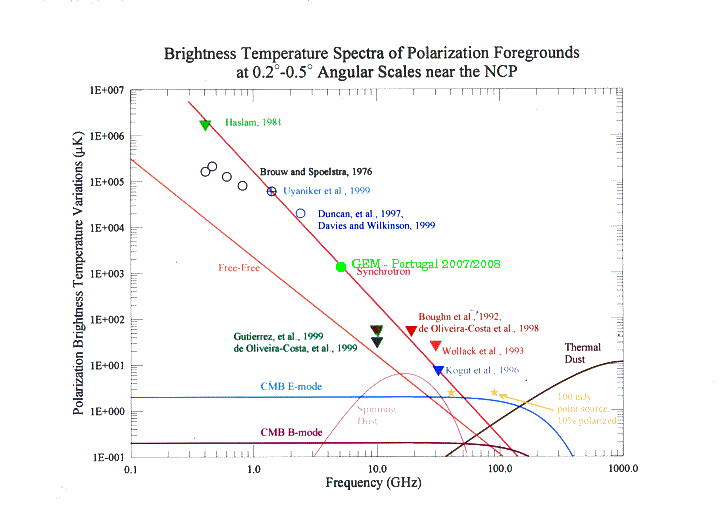
The study of the CMBR, of its temperature small fluctuations (about ~50~80 μK) and its polarization
small variations (1-10 μK) are in the vanguard of cosmologic probes. It allow us
to reconstitute, with great precision the cosmic history and to determinate the
geometry, age and contents of the Universe.
But the signal is partially
obscured by radiation emitted by the Milky Way. To help quantifying this
galactic contamination, the GEM project will map the sky with high sensitivity
and absolute calibration, literally
lifting the veil to the CMBR.
figure 1 - Galactic
Foreground spectra
(Adapted from Oliveira-Costa)
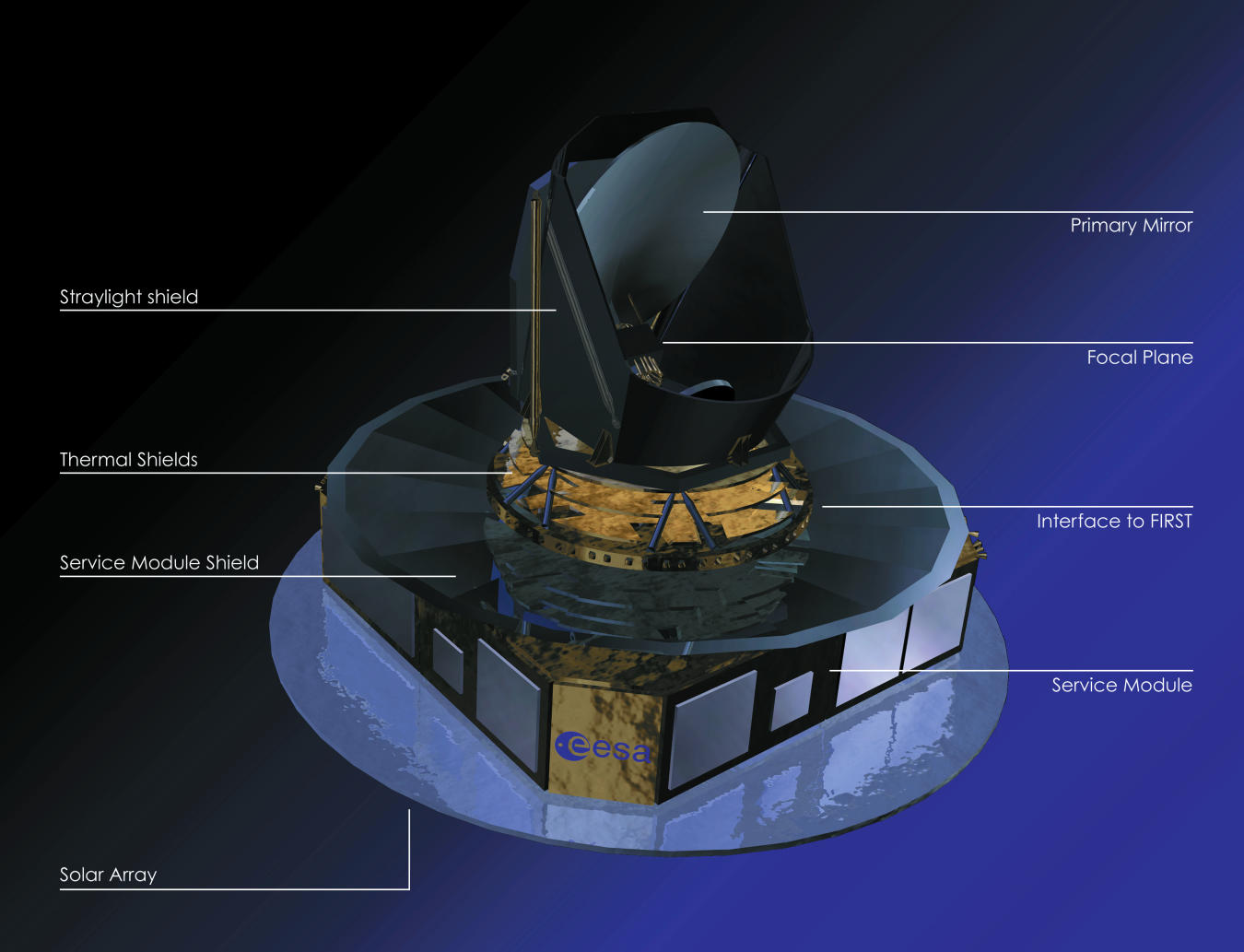
For a better understanding of the phenomenology of polarization foregrounds (galactic dust emission, galactic synchrotron and free-free emission,
figure 1), that contaminate the Cosmic Microwave Background signal to detect, namely with the
Planck Surveyor satellite - ESA,
launch by 2007. We plan to survey the North Hemisphere polarized galactic emission at 5 and 10 GHz with a 9-meter dish antenna installed in Central Portugal
(see simulations). This will complement the South Hemisphere survey carried by the
Brasil team. Together, both surveys will produce an almost complete sky template (~85% sky coverage) of the polarization states of the synchrotron emission. At these observing frequencies, Faraday rotation depolarization is negligible thus permitting a better extrapolation for the Component Separation Techniques in the CMBR data processing.
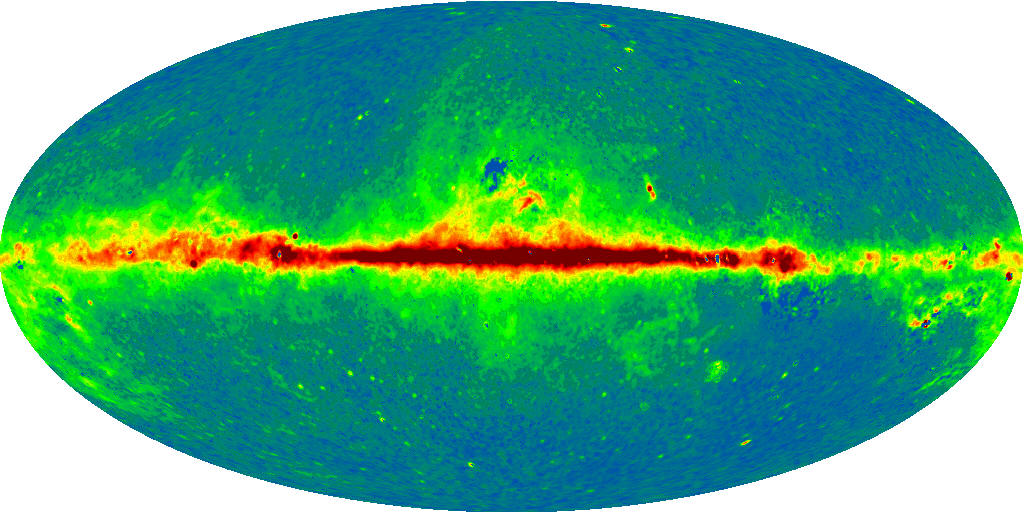
These
polarization templates are also relevant for galactic dynamics providing the
means to map the global galactic magnetic field.
The galaxy (synchrotron emission) as seen by the
WMAP satellite
The antenna with its receiver will be installed in
Fajão - Pampilhosa da Serra ( Long. 7º 52' W, Lat. 40º 11' N ; Alt: 839 meters.
).
The sky coverage we should expect :
Brasil Survey (2006)
Portugal Survey (2007)
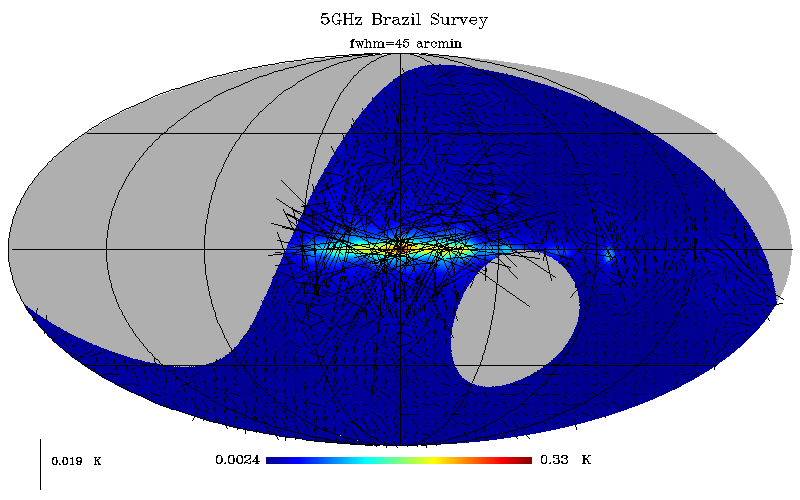
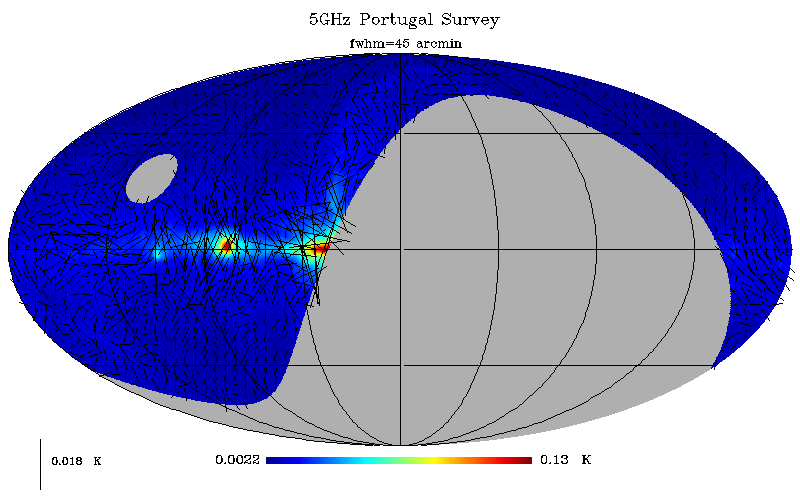
Common region
The 5 GHz Mosaic (2007-)
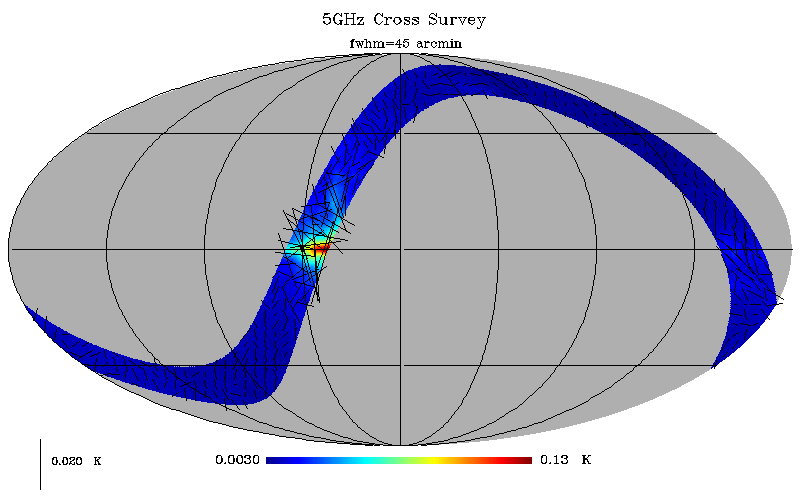
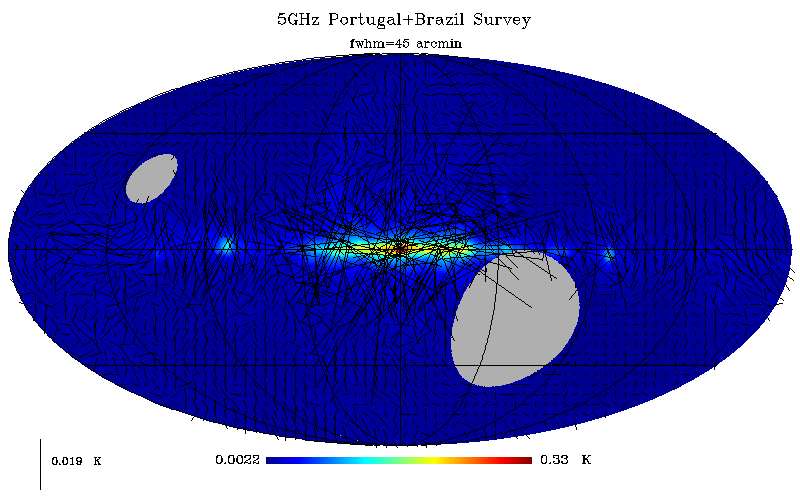
Acknowledgements:
This project has the support from Fundação
para Ciência e Tecnologia (Portugal) through grants POCI/CTE-AST/57209/2004
and POCTI/FNU/42263/2001 and Câmara Municipal de Pampilhosa da Serrra
We acknowledge Portugal Telecom, TEGAEL, SOMAGUE Engenharia for their support.
We also acknowledge
Eng. Luis Vale and family,
owners of the land where the antenna will be installed.
Related GEM pages:
THE GEM project
THE GEM project in Brasil
| 













